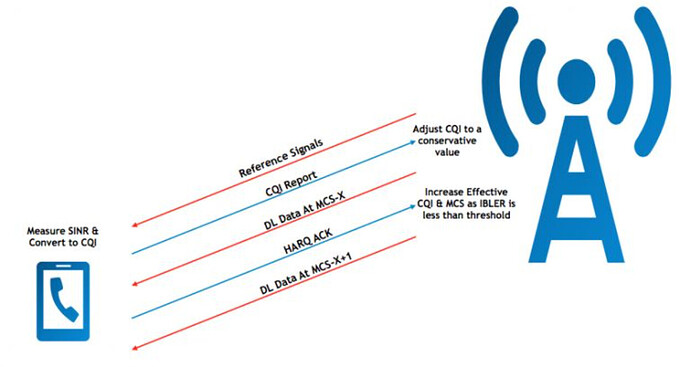Continuing the SINR to CQI mapping, i would like to give a quick description on a simplistic math reasoning on how the SINR to CQI captures the radio conditions.
SINR is a measure of the quality of a wireless communication link. It is defined as the ratio of the power of the desired signal to the sum of the powers of interference from other signals and noise. Mathematically, it can be expressed as:
SINR = 𝑃signal / (𝑃interference + Pnoise).
CQI on the other hand is an integer value that provides an estimate of the channel quality. It is used to select the appropriate modulation and coding scheme (MCS) for data transmission. Higher CQI values correspond to better channel conditions and thus allow for higher data rates.
There is a direct impact of SINR on Data Rates. SINR directly influences the achievable data rate on a communication link. Higher SINR values indicate a clearer signal with less interference and noise, which supports higher-order modulation schemes and higher coding rates, leading to higher data rates. Conversely, lower SINR values indicate a noisier environment, which necessitates more robust, lower-order modulation schemes and lower coding rates, resulting in lower data rates.
CQI quantifies the channel conditions based on the measured SINR. Given a specific SINR value, the corresponding CQI value can be determined through a predefined mapping. This mapping is designed to ensure that the selected MCS can achieve a target block error rate (BLER), typically around 10%.
Concluding the SINR to CQI mapping captures the radio channel conditions by translating the measured SINR, which reflects the quality of the received signal, into a CQI value that indicates the most suitable modulation and coding scheme for data transmission. This ensures that the communication system adapts to varying channel conditions, optimizing data rates while maintaining reliable communication
Mathematical Mapping from SINR to CQI
The mapping from SINR to CQI involves several steps:
-
SINR Measurement:
The receiver measures the SINR of the received signal. This measurement captures the current channel conditions, including the effects of path loss, fading, interference, and noise. -
SNR to Effective SINR Mapping:
Since CQI is typically based on the effective SINR over a transmission block, various techniques like Exponential Effective SNR Mapping (EESM) can be used to map the measured SINR to an effective SINR value. -
Effective SINR to CQI Mapping:
The effective SINR is then mapped to a CQI value based on predefined thresholds. These thresholds are determined through link-level simulations that ensure each CQI corresponds to a specific modulation and coding scheme capable of achieving the target BLER. The mapping can be represented as:
CQI = 𝑓(SINReff)
where 𝑓 is a piecewise function that assigns CQI values based on SINR thresholds.
On the next post the effective sinr will be further explained.
LinkedIn: ![]()
